Hydrosols for the Skin:
Your Ultimate Guide
BY OLIVIA ABELLA
Despite their many benefits, hydrosols for the skin are often overlooked in the world of skincare. While essential oils have become increasingly popular over the years, hydrosols have remained relatively unknown
One reason that hydrosols are underrated in skincare is that many people simply aren’t aware of what they are or how to use them. Additionally, because hydrosols are less concentrated than essential oils, some people assume that they are less effective. However, this couldn’t be further from the truth. In fact, because hydrosols are gentler and more versatile than essential oils, they can be used in a variety of ways to address different skin and hair concerns.
If you ask me, they can be a game-changer for anyone looking to take their skincare routine to the next level. Not only can hydrosols help to hydrate and soothe the skin, but they can also provide a wide range of other benefits depending on the plant they’re derived from.
Keep on reading because this post has got you covered with all the essential information you need to effectively incorporate hydrosols into your beauty routine.
WHAT IS AN HYDROSOL?
Hydrosol is a byproduct of the steam distillation process used to extract essential oils from plants. During the distillation process, steam is passed through plant material, causing the release of essential oils and other volatile compounds. As the steam cools, it condenses into a liquid, separating into two distinct layers: the essential oil layer and the hydrosol layer.
The hydrosol is the water-based liquid that remains after the essential oil has been removed. It contains the water-soluble components of the plant, including micro-particles of essential oil, as well as beneficial plant compounds and nutrients.
They are a gentle and natural alternative to traditional facial toners, which often contain harsh ingredients.
The big beauty benefits of hydrosols
Benefits #1: More than just water
Hydrosols are more than just water: They are aromatic compounds that contain water soluble components, essential oil molecules of the plant distilled. They are very different from decoctions, infusions or teas. The big difference with water is that they are distillates with therapeutic properties with a broad range of applications (cosmetic, supplement, culinary..) thanks to its unique chemical makeup. In cosmetic, it’s wise to select the hydrosol based on the skin issue.
Benefits #2: Perfect PH for your skin
Hydrosols are slightly acidic, with a Ph. that ranges from 2.9-6.5, depending on your botanical material.
Hydrosols have a wide range of PH but are always on the acid end of the scale whereas distilled water has a neutral 7.0 PH. Why is it beneficial for your skin? Well, your skin is also slightly acidic with a PH of around 5.5. it is necessary to fight any bacteria and keep your barrier intact for beautiful skin. Using cleansers with slightly alkaline PH will disrupt your skin PH that’s why I recommend spraying your skin with a hydrosol every time you wash your face with soap or cleanser.
MOST HYDROSOLS HAVE A PH VERY CLOSE TO THE PH OF THE SKIN.
HOW TO USE HYDROSOLS
1. As a facial toner
The simplest and most popular method of utilizing an hydrosol is as a facial toner. Following your cleansing routine and before using your serum, you can spritz the hydrosol onto your face. Opt for an hydrosol with a pH level lower than 4.5 for increased astringency and pore-tightening effects. Examples of such hydrosols include neroli and sage.
2. As a makeup remover & in facial steam
Hydrosols can also serve as makeup removers, with Roman chamomile and geranium being ideal choices for this purpose. Another way to utilize hydrosols is by using them as a facial steamer. To do this, you can dilute the hydrosol with boiling water in a ratio of up to 50%. It’s recommended to choose a hydrosol with a pH level between 4.5 and 6 for this purpose.
3. In face masks
Hydrosols can also serve as the primary liquid ingredient in various types of masks, including clay masks or sheet masks. Select your hydrosol based on the concern you want to sdress. For inflammation use a cooling hydrosol like rose or cucumber. For anti-aging purposes use helychrysum.
HOW TO USE HYDROSOLS
01.
For the scalp
To prevent the acid mantle of your scalp and nourish hair follicles, you can dilute your shampoo with 50 to 70% of the hydrosol that suits your needs. Some suitable hydrosols for this purpose include cedar, rosemary, and geranium. For specific hair concerns, certain hydrosols can be especially beneficial. Sage hydrosol is ideal for oily or dark hair, while chamomile hydrosol is best for blondes. Cedar or rosemary hydrosol are good dry hair, dandruff, or a flaky scalp.
02.
in your conditioner
You can take your conditioner to the next level by adding the right hydrosol that suits your hair type or addresses specific concerns. It’s a simple yet effective method that can make a noticeable difference.
To do this, simply dilute your conditioner with hydrosol. Aim for a ratio of 20 to 30% hydrosol to conditioner. This allows the hydrosol to work in synergy with the conditioning properties of your hair product, providing an extra boost of nourishment and targeted care.
03.
Leave-in treatment
Hydrosols can also be used as a leave-in treatment, rinse or scalp treatment, applied after using your conditioner. To address dandruff and an itchy, flaky scalp, you can mist the hydrosol directly onto your scalp. Catnip and rosemary hydrosols are recommended for treating hair loss, while Clary sage , Lime or Neroli hydrosols are effective in managing excessive oiliness of the scalp.
THE BEST HYDROSOLS FOR YOUR SKIN
Each hydrosol has a unique composition of floral constituents that can provide different benefits to the skin. For example, rose hydrosol is known for its hydrating and anti-inflammatory properties, making it a great choice for dry or sensitive skin. Lavender hydrosol has a calming and soothing effect on the skin, making it ideal for oily or acne-prone skin. Chamomile hydrosol is gentle and calming, making it a good option for sensitive or irritated skin. Witch hazel hydrosol is a natural astringent that can help to tighten and tone the skin, making it beneficial for oily or combination skin.

Acne
Blood orange, Frankincense, Lemon Thyme, Neroli, Rosemary, Tulsi, Spearmint
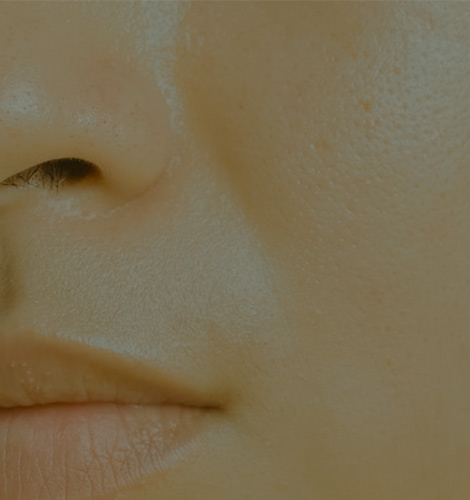
Oily skin
Clary sage, Eucalyptus, Lavandin, Rose

Dry & sensitive skin
Calendula, Chamomille, Cucumber, Helichrysum, Lemon Thyme

Mature skin
Frankincense, Eucalyptus, Lemon Balm, Neroli, Rose Geranium, Tulsi
SELECT THE RIGHT HYDROSOLS FOR YOUR HAIR

To strenghen hair
Leon Verbana

Oily Scalp
Lime

Hair Growth
Peppermint, Ylang Ylang, Tulsi

Dandruff/scalp irritation
Catnip, Rosemary, Rose, Tulsi, Spearmint
Beware of fake hydrosols
It’s important to be cautious of products that claim to be hydrosols but are actually just a mixture of essential oils or fragrance with water. To ensure you’re getting genuine hydrosols, always make it a habit to check the ingredients label before purchasing. Look for the specific Latin plant name followed by “hydrosol”, “distillate” or “water” in the ingredient list. It should be a simple and transparent label that clearly states the hydrosol as the main ingredient. By doing this, you can avoid misleading products and ensure that you’re truly getting the beneficial properties of authentic hydrosols.
This is not a real hydrosol even though it is marketed as such. Real hydrosol doesn’t contain alcohol.
This is an authentic hydrosol. It only includes the plabt botanical name folllowed by the mention “water”. It can also say “hydrosol” or “distillate”.
Preserved or not preserved?
Pure hydrosols should not be preserved with any additives. However, most companies mass-producing hydrosols for retail sale often add preservatives to give their products longer shelf life. This is the reason why I Had been buying or importing my hydrosols from France for years. Luckily I found one US supplier that sells 100% pure hydrosols without the addition of any additives. See above the hydrosols I recommend purchasing.
If you decide to make your own or buy non-preserved hydrosols be aware that Each hydrosol has unique constituents and shelf life. The PH is a reliable indicator of the potential lifespan of a hydrosol. Even though, under ideal storage conditions, they generally have a shelf life of about 6-8 months, some hydrosols like orange flower only have a shelf life of 3 months after the opening of the bottle. The reason behind it is because some herbal constituents are naturally antibacterial, antifungal and even contain alcohol components that self-preserve the hydrolat. It’s a good idea to do some research on the particular hydrolat you made or purchased. Also, for that reason all non-preserved hydrosols should be stored in the refrigerator.
STORAGE RECOMMENDATIONS
It is recommended to preserve hydrosols in cool, constant temperatures ( About 50 F ) with minimal or no light and sterilized dark or opaque containers. Label the bottle w/ the best-before date (Generally use 6 months after opening the bottle).
Storing or re-packaging your hydrosols in a spray bottle is a great option as you can dispense the product without keeping opening the bottle and risking unnecessary contamination.
Trick to know if your hydrosol has been contaminated.
SMELL
To find out if your hydrosol has been contaminated with unwelcome bacteria, you can just smell it. If the scent is not as strong as when you first opened the bottle that means micro-organisms started consuming volatile organic compounds. The same If they smell like acid, vinegar or smell like fermented dairy discard the product.
PH CHANGE
Another trick is to test the PH of the hydrosol upon receipt then monthly. If you notice a change in PH (more than 0.5 PH from the initial reading) you can assume the hydrosol has been contaminated. Generally hydrosols w/ PH of 5.0 or less last longer than hydrosols with a pH over 5.0 w/ a few exceptions.
COLOR CHANGE
You can also observe the color and clarity. Contaminated or old hydrosols sometimes grow a bloom. Bloom is a cloudy substance that can settle towards the bottom and looks a bit like the “mother” you see in natural raw vinegar.
Do you have any questions or comments?
Ask away!
MORE SKIN TIPS!
hello, I’m olivia!
MY STORY
My goal is to empower individuals to embrace a holistic approach to Skin Health, incorporating mindful detox practices, wholesome nutrition, and targeted skincare techniques. Through my guidance and support, I aim to help you unlock the true potential of your skin and experience the profound connection between inner well-being and outer radiance.
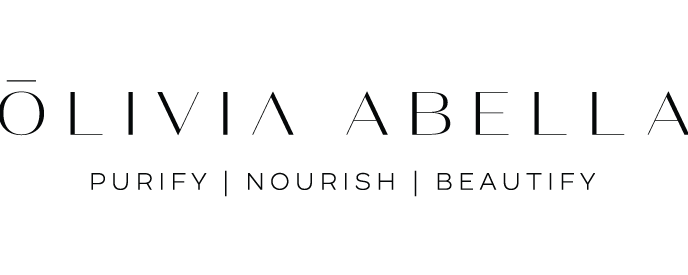
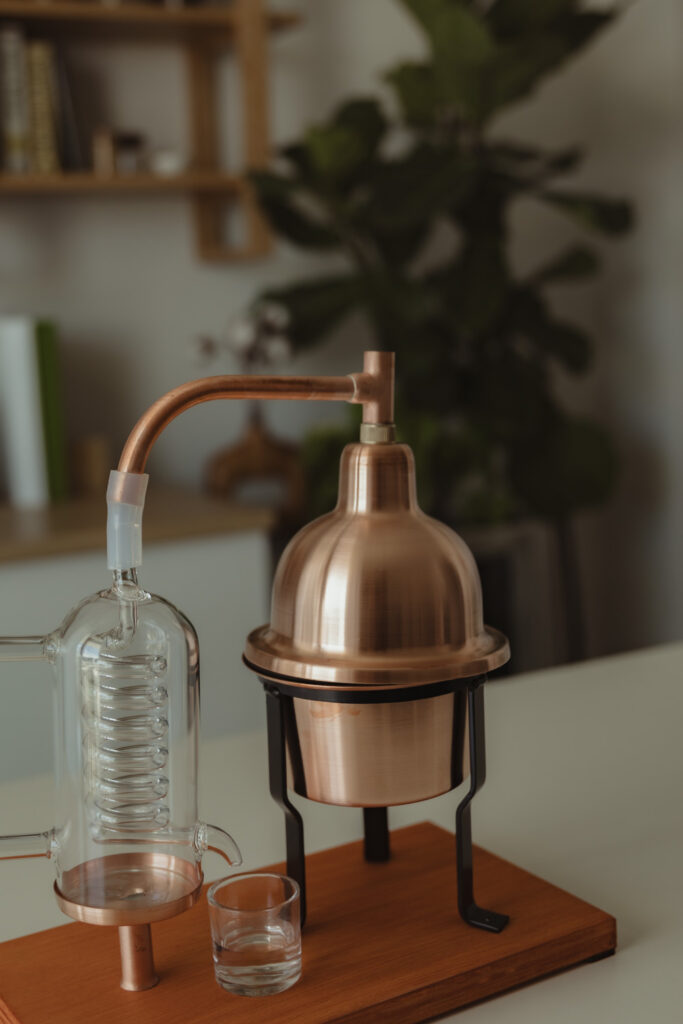
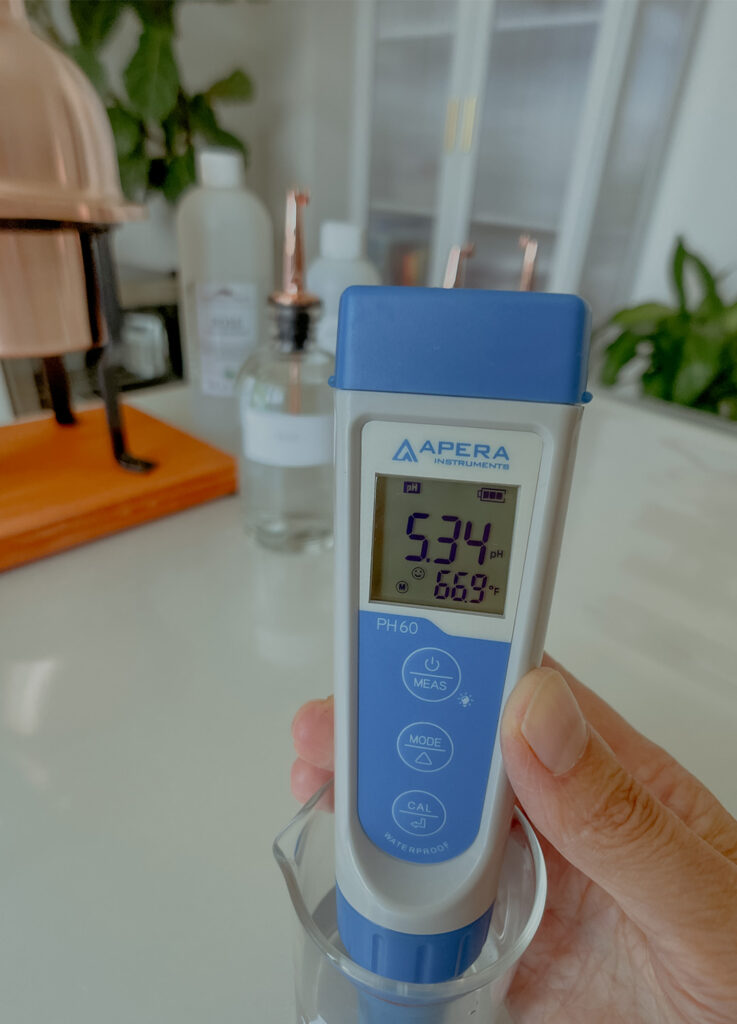






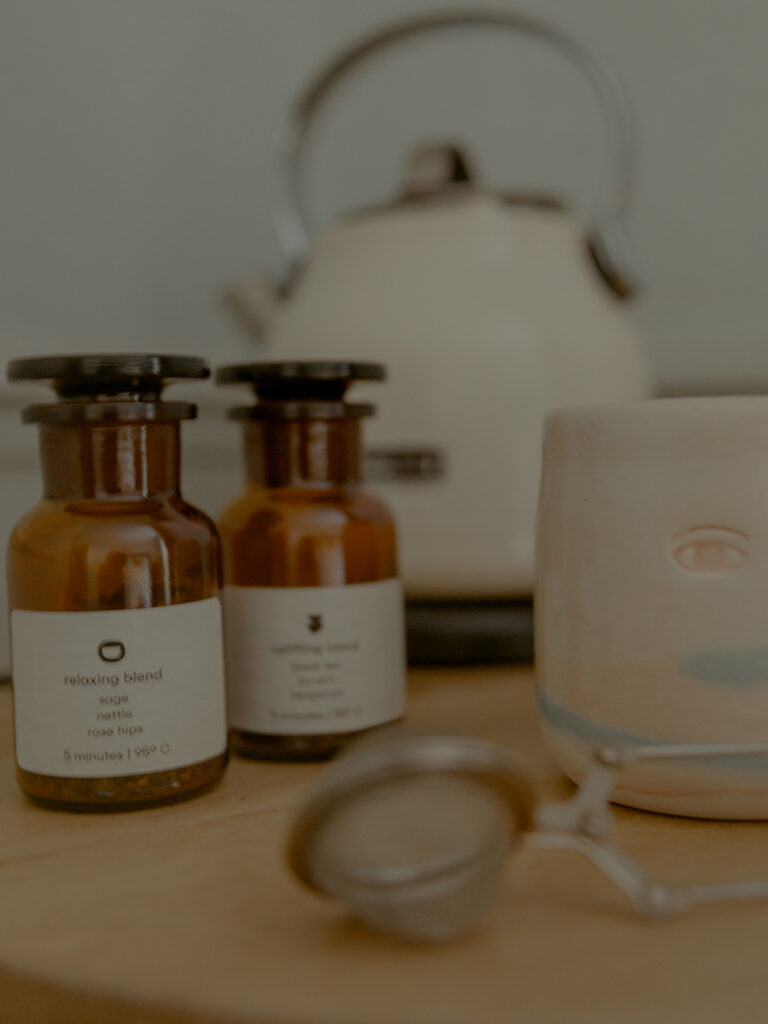
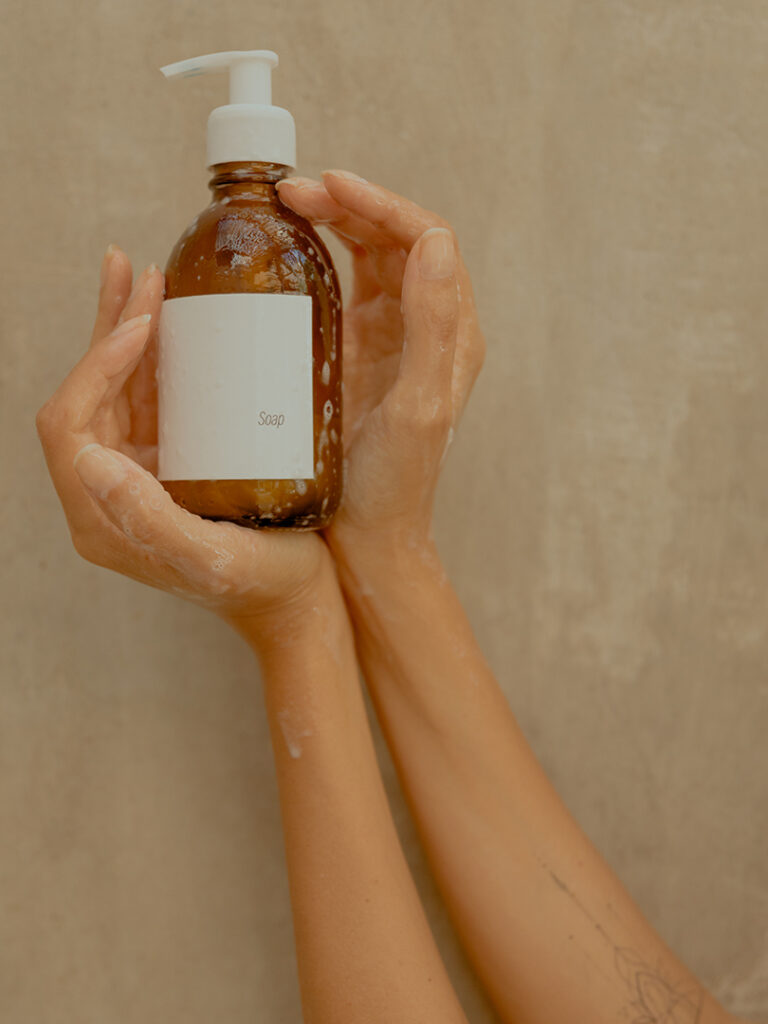


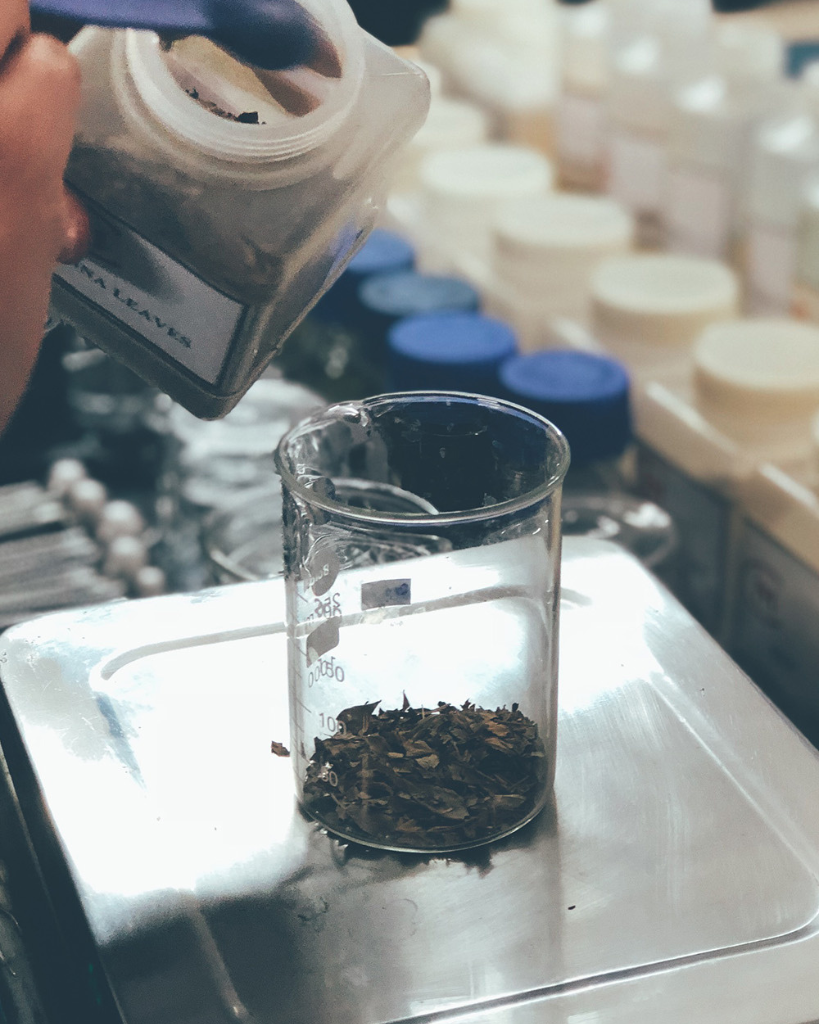
Leave a Reply